
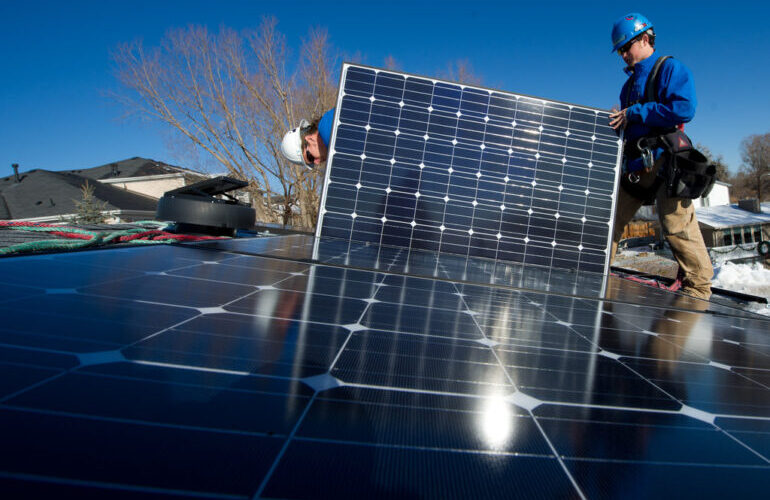
Wood Mackenzie has released a new report exploring the impact of the Package of Beautiful Acts (HR1) on the US residential solar market. The analysis team found that canceling the Investment Tax Credit (ITC) under Article 25D would hinder short-term growth, but the long-term potential remains strong. It is expected that growth will resume after 2028. The latest insight report by Wood Mackenzie, "Short term Challenges and Long term Potential: Evaluating the Potential Market for Household Solar Energy in the United States," points out that compared to the "business as usual" baseline scenario in the second quarter, HR1 predicts that household solar installed capacity may decrease by up to 46% by 2030. Cancelling the Household Investment Tax Credit (ITC) will make it more difficult for homeowners to afford solar energy, causing significant disruption to the market in the short term. Many companies will no longer be able to continue operating, "said Zoe Gaston, the head of Wood Mackenzie. However, the market will eventually adapt, and the remaining participants will diversify and find ways to cut costs. In addition, the rise in retail prices will continue to make the value proposition of household solar energy more attractive Despite these short-term challenges, the report reveals enormous long-term opportunities. It is expected that by 2050, the total addressable market (TAM) for residential solar energy will reach nearly 1500 gigawatts. This analysis uses the data of the U.S. Census Bureau and Wood Mackenzie to estimate that by 2050, there will be about 92 million self occupied single family homes in the United States. After excluding inappropriate properties and properties with existing solar installations, there will be more than 70 million new residential solar energy in the next 25 years. Even in Wood Mackenzie's conservative 25 year low value scenario (assuming TAM penetration rate is only 12%), the market will still increase residential solar capacity by 150 gigawatts by 2050. However, in 25 years, many things could change, including advances in technology and products, evolution of business models, and cost reductions, all of which could accelerate the growth of household solar energy, "Gaston added. We expect the final outcome to be more positive than the low value scenario we predicted
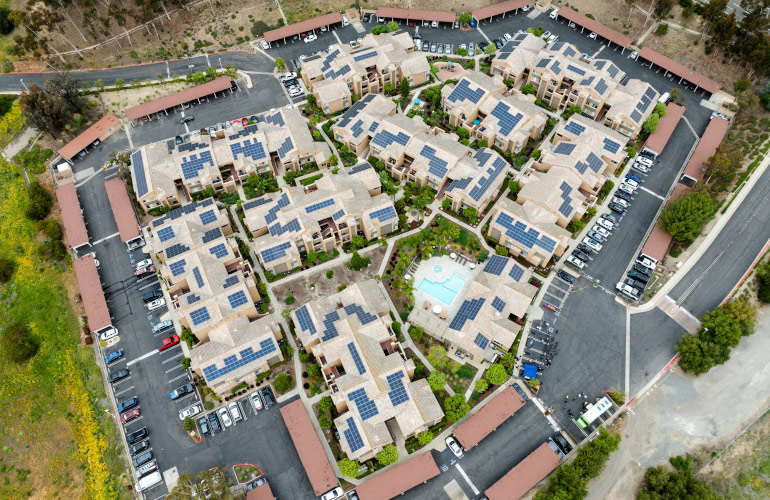
California apartment owners and managers who provide housing for low-income residents can now save significant energy storage system costs through the state's Multi Family Affordable Housing Solar (SOMAH) program. The new incentive measures enable eligible properties to pair energy storage systems with solar systems at lower prices, thereby increasing residents' energy resilience and reducing long-term electricity costs. The energy storage system must be paired with the new SOMAH solar device. Based on the system size and tenant benefits, incentive measures can cover up to 100% of the cost of eligible energy storage projects. As long as the energy storage system primarily serves tenant units, public areas, or both, it can receive funding. By capturing excess solar energy, energy storage systems can reduce utility bills, provide backup power during power outages, and support California's transition to clean and resilient energy. Anna Taleysnik Mehta, Senior Project Manager of SOMAH at the Sustainable Energy Center, said, "In the event of a planned power outage or emergency, the energy storage system can ensure that the lights are on, the refrigerator is cooling, and the phone is charging. Using stored solar energy during the peak electricity price period is also a wise move to manage the energy costs of real estate Over the next seven years, the state has allocated nearly $184 million to incentivize energy storage projects. To qualify, energy storage projects must meet existing SOMAH eligibility requirements, including serving low-income households subject to contract restrictions, and be located within the utility service areas of Pacific Gas and Electric Company, Southern California Edison Company, San Diego Gas and Electric Company, Liberty Utilities, or PacifiCorp. Other recent changes to the SOMAH program include expanding the funding for roof maintenance required for installing solar energy and simplifying the approval and payment processes in areas with lower participation in the program. SOMAH is a program of the California Public Utilities Commission that provides clean solar energy and monthly water and electricity credits to hundreds of thousands of low-income residents who would otherwise be unable to use renewable energy at home. Since its launch in 2019, SOMAH has allocated and reserved over $240 million in incentives to support more than 100 megawatts of solar power capacity, serving over 59000 tenants across the state. This is the largest low-income solar project in the United States. SOMAH's unique community-based approach ensures long-term economic benefits for low-income families and homeowners, helps accelerate the development of the multi family residential solar market, and creates employment opportunities for disadvantaged and low-income communities.

For industry insiders, reducing costs is not a new thing in order to develop solar energy in the United States. With the cancellation of the Solar Investment Tax Credit (ITC), now is a good time to use existing tools to reduce costs and continue to have an impact. At the SolarAPP Foundation, we are committed to collaborating with installers and local governments to reduce licensing costs and shorten approval times, providing affordable energy for homeowners. Our software SolarAPP+has just issued over 100000 licenses - which fully demonstrates what we can achieve when all stakeholders work together to solve industry challenges. SolarAPP+is an online software platform that automates the licensing process for residential solar and energy storage systems. Contractors using SolarAPP+do not need to wait for days, weeks, or even months of manual permit review to obtain immediate approval for compliant solar and solar+energy storage systems within their participating jurisdictions on the same day. This platform ensures compliance with electrical regulations, structural integrity, and other safety standards, enabling cities and counties to significantly reduce permit backlog and free up human resources. The National Renewable Energy Laboratory (NREL) in the United States has collaborated with stakeholders in the solar industry, regulatory agencies, building safety communities, and local governments to develop SolarAPP+, aimed at making it easier and faster for jurisdictions to issue compliance licenses to licensed solar installers and contractors. SolarAPP+is currently managed by the non-profit organization SolarAPP Foundation, and I am honored to lead the foundation. Our goal is to reduce the cost of transitioning to clean energy. SolarAPP+has achieved particular success in standardizing highly decentralized and time-consuming licensing processes across jurisdictions, reducing soft costs, and accelerating solar deployment schedules.

The School of Architecture at the University of Kansas has completed a student led design and construction project that combines practical architectural education with sustainability. This project marks the completion of the 18th consecutive LEED Platinum certified residential project for Studio 804 at the school, and the second project supported by S-5 product donations! Studio 804 is a unique and practical design and construction project in the Master of Architecture program at the University of Kansas. This project was founded by Dan Rockhill with the aim of providing immersive experiences for final year graduate students, challenging them to design, procure materials, and build a complete building in just nine months, laying a practical foundation for sustainable building practices. The residence at 1040 New York Street consists of a 2000 square foot (approximately 187 square meters) main residence and a 1000 square foot (approximately 97 square meters) ancillary residential unit, which includes a garage and additional living space. The exterior walls of the residential building are made of white composite metal panels, and are paired with a 22 grit matte black standing edge metal roof. The residence is located on a previously vacant fill plot in East Lawrence, a historic neighborhood adjacent to the Kansas River (KAW) and downtown Lawrence. In order to obtain LEED Platinum certification, the project adopted a solar photovoltaic system. S-5! Donated its PVKIT ® The DirectAttach solar bracket system enables the installation of 8.8 kW solar cell arrays without penetration, using Navitas 550 W double-sided 144 piece semi cut single crystal modules. It is expected that the solar cell array will offset most (or even all) of the energy consumption of the residence. In addition, S-5! It also contributed its ColorGard snow retention system, which is designed to match the aesthetics of the roof and provide snow management during the harsh winter season, protecting the roof and occupants. S-5! CEO and founder Rob Haddock said, "We are honored to support projects like Studio 804, which integrate high-level design, practical learning, and real-world sustainability. These students are learning how to build houses more intelligently and efficiently - and this starts with high-quality materials and streamlined installation practices.

NLYTN Energy announced the launch of a new solar specific 3D visualization service to help engineers communicate recommendations to stakeholders. From local governments to landowners, solar stakeholders are seeking higher transparency and stronger confidence, especially in rural areas. Traditional planning schemes, site maps, and technical drawings often fail to meet the requirements. Based on actual engineering and existing site conditions, 3D project visualization can provide necessary clarity to build confidence and make informed decisions at various stages of the sales and development process. NLYTN helps project teams showcase their solar installations comprehensively by creating accurate, realistic, and location accurate project images based on facts. Unlike typical visualization companies, NLYTN's renderings are created by renewable energy professionals, not just graphic designers. NLYTN's NABCEP and PEM certification teams understand utility interconnectivity, licensing restrictions, AHJ requirements, and common site challenges. The team does not need to waste time on basic coordination - they already understand system components, layout strategies, and licensing priorities, and can provide renderings that directly support project success.

EDPR NA Distributed Generation(EDP Renewables North America The distributed power generation business under the company has signed a 20-year power purchase agreement (PPA) with California Water Service to install 2.35-megawatt DC on-site solar cell arrays at the company's sewage treatment plant in northeast Bakersfield. This cooperation aims to reduce the long-term impact of public utility companies on the environment. Cal Water and EDPR NA DG expect the system to generate approximately 3800 megawatt hours of renewable energy annually. According to current electricity prices for customers in the Bakersfield area, one of California Water's largest service areas, it is expected that renewable energy generated by solar arrays will reduce grid energy costs by approximately $1.7 million during the agreement period. At Cal Water, we are committed to being responsible environmental managers, and our collaboration with EDPR NA DG will help us reduce traditional electricity costs, achieve scientifically sound greenhouse gas reduction targets, and enhance sustainability, "said Marty Kropelnicki, CEO and Chairman of Cal Water. We look forward to the deployment of this new on-site solar cell array, which is crucial for us to continue providing safe, reliable, and affordable water supply services to our customers for decades to come.
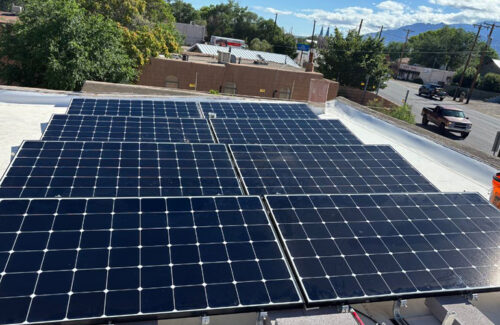
Cottonwood Gulch Expeditions, a non-profit educational organization in New Mexico, announced its continued partnership with Everyone Solar to install new 10.08 kW solar panels and electric vehicle charging stations at its historic headquarters. energy costs into capital projects and scholarships, thereby increasing access to education for resource poor youth and having a greater impact. In 2019, the two parties successfully collaborated, generating 8.85 kilowatts of solar energy and directly reducing emissions by over 17000 pounds (approximately 7000 kilograms). On this basis, the new solar energy project will reduce electricity expenses while deepening Cottonwood Gulch's long-standing commitment to sustainable development and practical learning. This investment not only brings environmental benefits, but also provides important educational tools for students participating in the institution's immersive outdoor projects. We are delighted to expand our partnership with Everyone Solar, and their support will help us achieve our vision of sustainable outdoor education, "said Jordan Stone, Executive Director of Cottonwood Gulch Expeditions. By integrating solar energy and electric vehicle infrastructure into campuses, we are investing in community health, environmental future, and education for every young person participating in our projects. Together, we inspire students' curiosity and sense of responsibility - qualities that will become environmental guardians in the future Cottonwood Gulch works closely with local schools and families to bridge the accessibility gap in outdoor and environmental education, ensuring that children from different backgrounds can establish strong personal connections with nature. The new solar installation will enable the organization to reinvest the savings from reduced
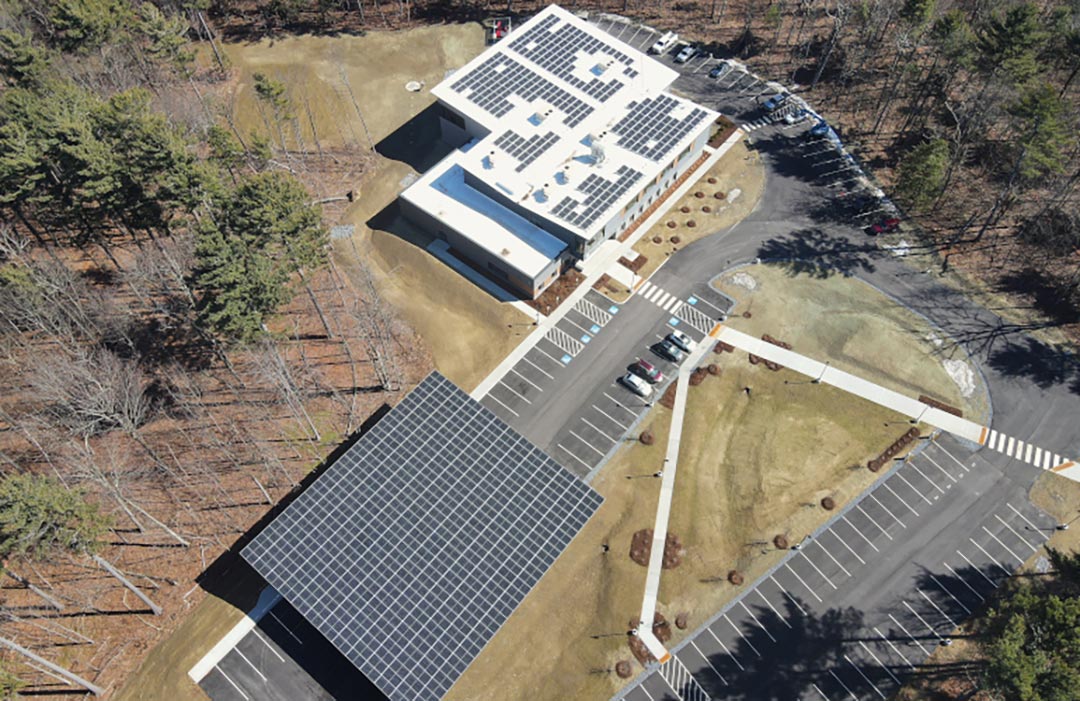
Vermont is known as the 'Green Mountain State', which is not accidental - the Green Mountain Range runs through its center, but the state is covered in dense forests from border to border, attracting nature enthusiasts to admire the changing leaves of trees every season. This obsession with protecting unobstructed green landscapes can sometimes pose challenges for solar installers in Vermont, especially when a town wants to achieve 100% solar coverage. Aegis Renewable Energy Company (ranked 275th on the 2025 Top Solar Contractors list) solved this problem for the town of Colchester last year by launching four unconventional site selection projects. In 2018, Aegis collaborated with the third most populous municipality in Vermont to install a 150 kW ground installation project on a small section of the Roosevelt Expressway and another 150 kW ground installation project in a pumpkin field. In 2024, Aegis completed the project at a local cemetery and a new entertainment center in the town. The town's goal is to install 720 kilowatts of solar energy, and Aegis has achieved this goal. They have been striving to generate 720 kilowatts of electricity because this is the electricity consumption of the town, so they want to offset this part of the electricity consumption, "said Sonia Bain, Vice President of Aegis. Every year, we strive to find new power plants to help them achieve this goal. Ultimately, the solar energy they produce this year is sufficient to meet the electricity needs of the town Although it is easy to select sites for the two projects in 2018, finding suitable space for the final 420 kW project is not an easy task. Behn stated that Colchester lacks land that can support solar energy without causing serious shading problems or requiring deforestation. To avoid this situation, Aegis recommends installing rooftop and carport arrays at the entertainment center under construction, and installing another ground support on an unused plot of land at Fort Ethan Allen Cemetery. We have been working hard to find an efficient venue, "Bain said. So we proposed the idea of a carport. It's a very creative way to get them to the required quantity The entertainment center took 20 years to build and will be open to the public in February 2025. The facility features an indoor track, basketball court, gym, a 120 kW rooftop array, and a 150 kW carport spanning the parking lot. Aaron Lavallee, the design, licensing, and project manager of Aegis, stated that the entertainment center features a butterfly style 5 ° inward sloping roof and requires a support system that can tilt 5 ° and 15 ° to ultimately tilt the array 10 °. The company has chosen Sun Ballet, an Italian concrete support company that distributes in the United States. The Sun Ballet product is a highly competitive integrated solution for us. The bracket itself is a ballast and can also serve to ground the array, "he said. They have American distributors in New Hampshire, which greatly shortens pro...
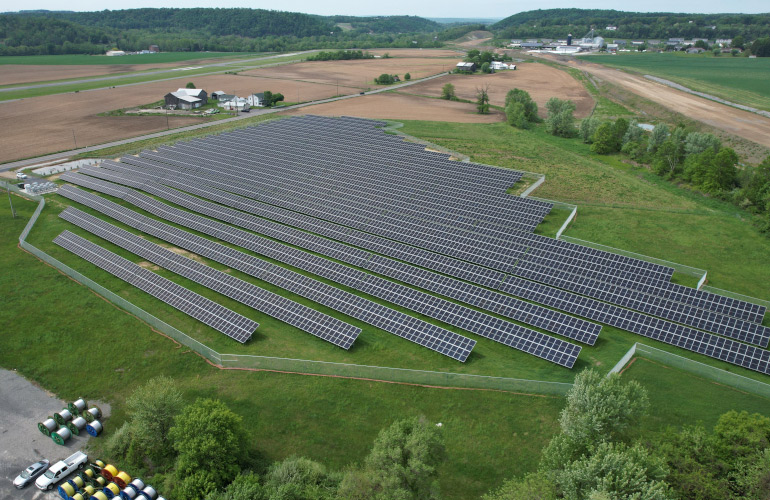
Surpassing the previous generation is the dream of the family - to open up a path to success for future generations. Ten years ago, Barry Moore founded a solar installation company in Pennsylvania. As he was preparing to retire, his sons Tyler and Matt took over and continued his career. Although the company is still in the family's hands, the two brothers still hope to lead Moore Energy (ranked 149th on the 2025 Top Solar Contractors list) onto their own path. Since we joined, we have been focused on developing and expanding our business, "said Tyler Moore and his brother, co owners of the new company. We have entered the development field and started building these small-scale utility scale solar power plants in central Pennsylvania Moore Energy was founded in 2008 as a residential and small commercial contractor in the Greater Philadelphia area, with an early average annual installed capacity of less than 500 kilowatts. In 2024, the company completed over 200 residential projects, 20 commercial rooftop projects, and the first utility scale solar power plant, with an installed capacity of nearly 12 megawatts that year. Moore said that the key to entering large-scale projects is to seize the opportunity. In 2021, the Pennsylvania Supreme Court ruled in the case of Holmridge v. Public Utilities Commission, allowing for net measurement compensation. This ultimately gave commercial real estate the opportunity to profit from solar energy exports and paved the way for the development of solar energy on a utility scale in the state. When the Holmridge case occurred in 2021, Matt and I, as business owners, decided to look for opportunities in central Pennsylvania because we realized the business opportunity: I could take a piece of land and install a solar system on it, and all the generated electricity would be fed back to the utility company, which would pay for it. I didn't need any basic business or customers, "Moore said. We ultimately created this business model: finding land, obtaining all interconnectivity and approvals, building an economically viable solar power plant, and then selling it to people who want to own the system for 30 years Although this is a common practice in other states, this new business line appears very innovative for Moore Energy. Moore said that his accounting background, combined with his brother Matt's expertise in solar installation, made it easy for him to take on larger projects. We have been deeply involved in the commercial field for 15 years and have an experienced installation personnel base. We have also done ground installation in the commercial field, so we have carried out this work on a large scale [which has never changed], "he said. The real learning curve lies in collaborating with land development and townships, which requires an 18 month process Although the door to large-scale development of public utilities in Pennsylvania is now open, Moore said that Holmridge's decision has also kept the company b...
Categories
New Products
Tin Roof Rapid Solar Mounting System with Hanger Bolt Read More
Residential Small Solar Easy Bracket Kit for Home Balcony Read More
Automatic Single Pile Solar Tracker with 10 PV Panels Read More
Angle Adjustable Aluminum Easy Solar Panel Bracket for Garden Read More
Intelligent Single Post Dual Row Solar Tracking System Read More
5000ES Solar Off-Grid Energy Storage Inverter Supplier Read More
Multi Drive Double-Sided Single Axis Tracker System Read More
© Copyright: 2026 Xiamen Wintop New Energy Tech Co., Ltd.. All Rights Reserved.

IPv6 network supported
Friendly Links:
Integrated Solar System